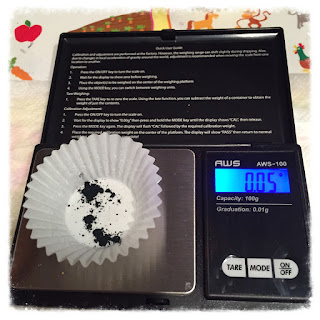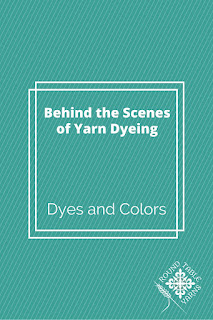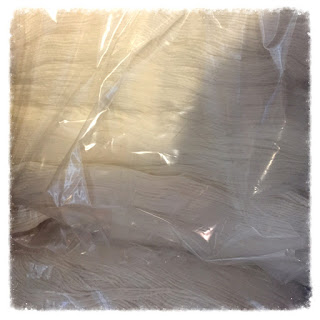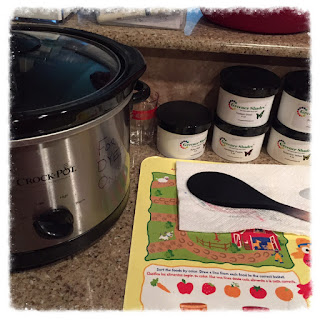I've been a fan of indie dyed yarn for a number of years. Before I started dyeing myself, I had only a vague idea of what went into dyeing yarn. I knew there were a lot of steps I probably had no clue about, but I wasn't sure what those might be. So I'm going to let you guys behind the scenes of Round Table Yarns.
For dyeing yarn, a lot of options are available, from using Kool-Aid and food dyes to professional acid dyes. I went straight to the acid dyes, which are used to dye animal fibers. (For dyeing something like cotton, different types of dyes are used.) Basically, acid dyes need two things to set the color on the yarn: acid and heat. The acids most often used are vinegar and citric acid. After starting with vinegar, I moved to citric acid because vinegar has a strong odor, especially when being heated. The heat can be anything from a pot on the stove or crock pot to steaming in the microwave or oven.
But once I made the acid dye selection, I still had a lot of options in front of me. Which brand of dyes should I use? Some brands have tons of colors and other brands have only a small handful. I ended up choosing a starter set of Greener Shades Dyes, which comes with nine colors: a warm red, a cool red, blue, purple, green, orange, yellow, aqua, and black. And that's actually all of the colors that Greener Shades produces. I decided to go with these dyes because I liked that I can't choose from a bunch of different pre-mixed colors. I wanted to be able to do my own mixing for colors and knew that if I had a bunch of other options, I might be tempted to just use colors straight out of the jar instead of mixing my own (I'm not saying that I couldn't mix my own with tons of options, just that I personally might not have experimented as much). Plus I don't have a ton of space for dyeing so I don't have to store a lot of different colors.
I was worried for a while that I wouldn't be able to mix dyes to get some of the colors I wanted to create. A deep pink was one such color that I was unsure how to achieve. I started by just doing a less intense red, but it wasn't getting the true pink I wanted. So I experimented. And I was able to mix some of my dyes to create exactly the shade I wanted, which is the Gwynedd colorway (picture below). When that one came out of the dyepot, I did a happy dance! I'm much more confidant about experimenting and getting different colors now.

I did have some problems with the black, which depending on the dyes has a tendency to "break"--which means it splits into its component parts (because black is not truly a solid color but is itself a blend of colors). Sometimes, that can have a neat effect, bringing out a slight blue or purple to the black/grey. But other times, it doesn't work as well. I kept getting browns mixed into my black and that was not at all the effect I was going for. (Several of the Quest colors are greys that broke--see picture below.)
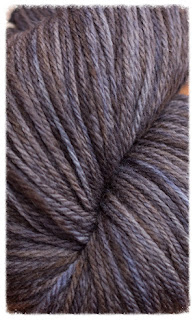
So after a lot of research, I decided to try a different brand of dye for black, with the aptly named colorway "True Black." It is indeed a true black, so I've switched to that brand just for the black.
At first, I was mixing up dye stock (putting a certain amount of dye powder into a certain amount of water) and then using syringes to measure out how much dye to add to the yarn. But I found that I wasn't always getting the most accurate results that way. For example, the Tristan colorway is actually a blend of four different colors. Getting even one of those out of balance can have a big effect on the final results, as evidenced by these two skeins on Tristan on the Lancelot base.

I wanted more color accuracy for repeatable colorways. So I got a scale that measures to the hundredth gram, and now I mix up dye for each dye lot rather than making up dye stock. It is a little more work, but I'm much happier with being able to repeat colorways and having them match much better. (Different dyelots will always have some variation, but I don't want to have as much variation as shown above!)
